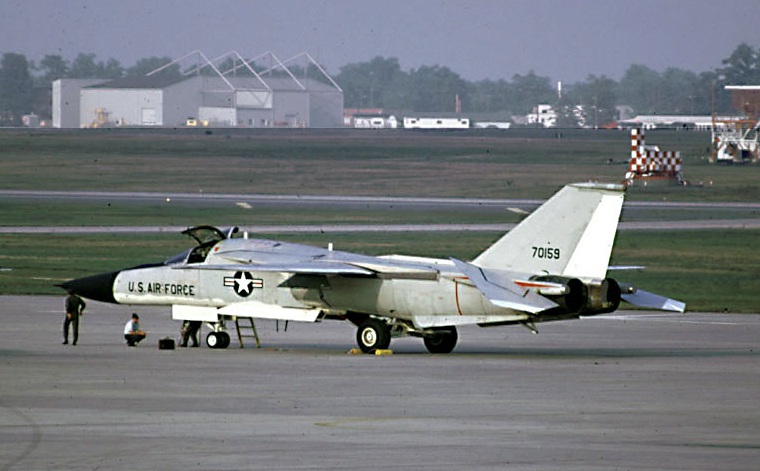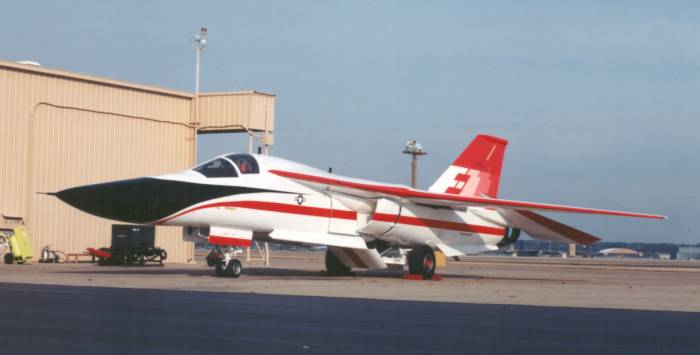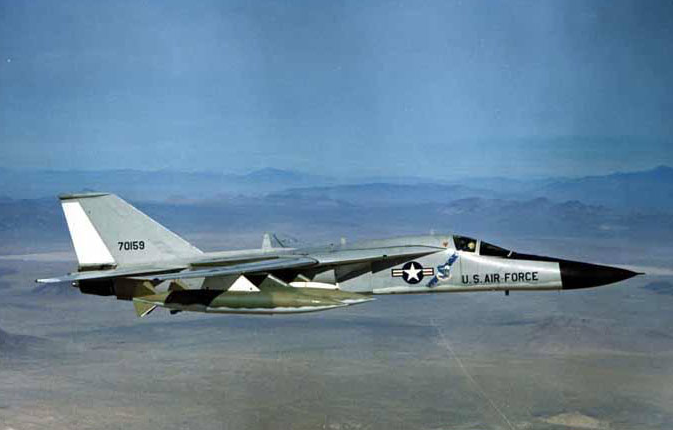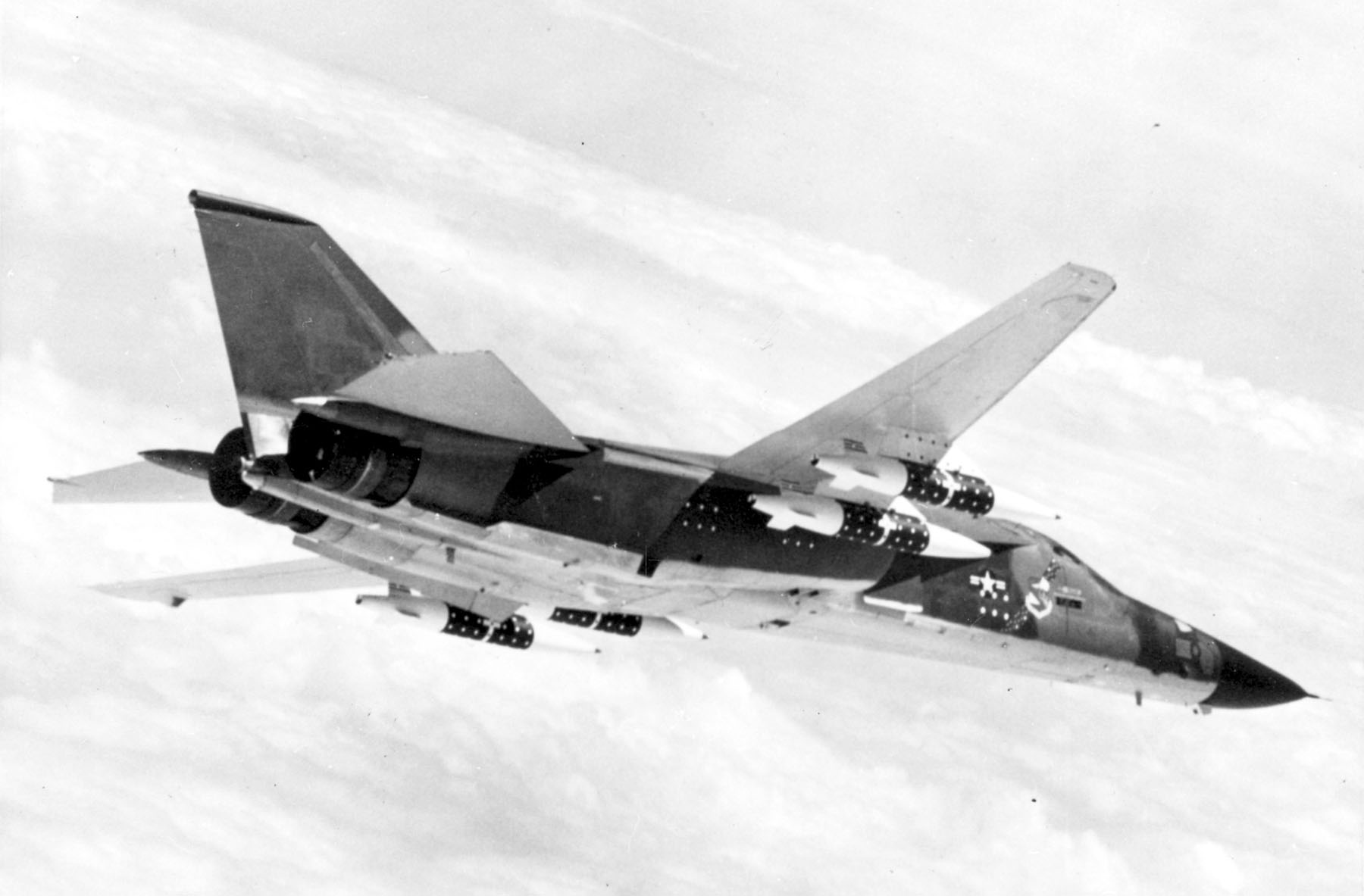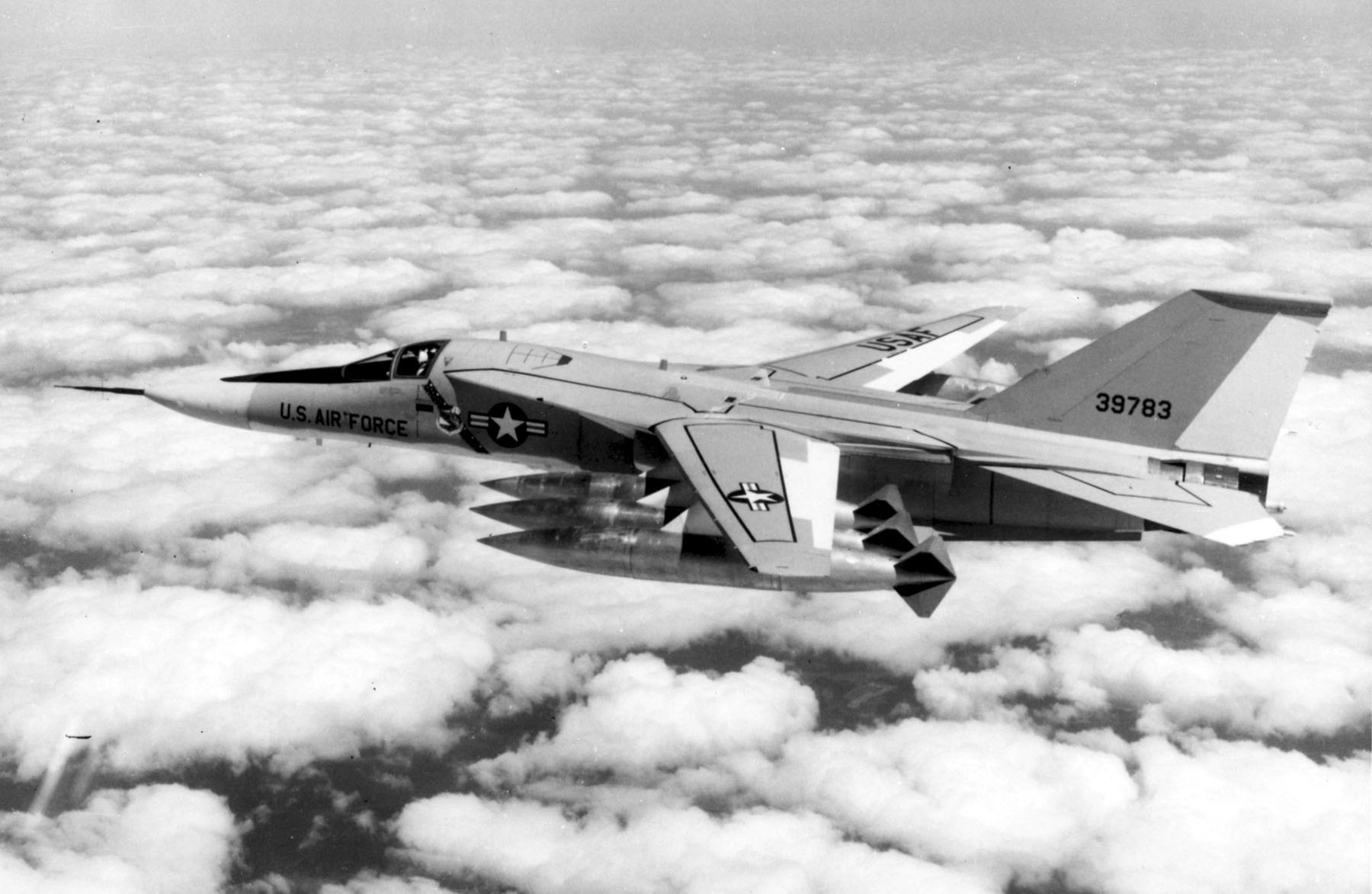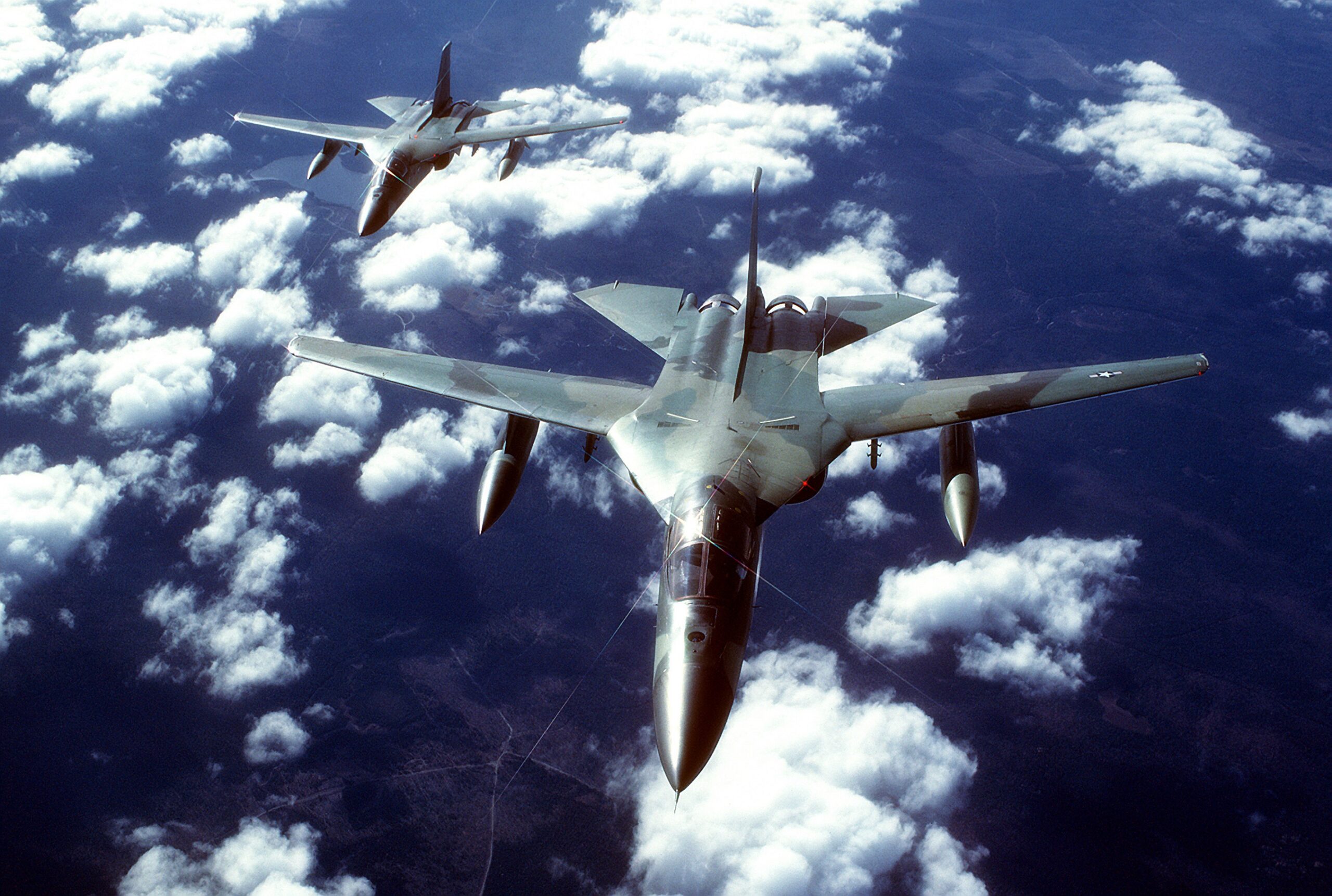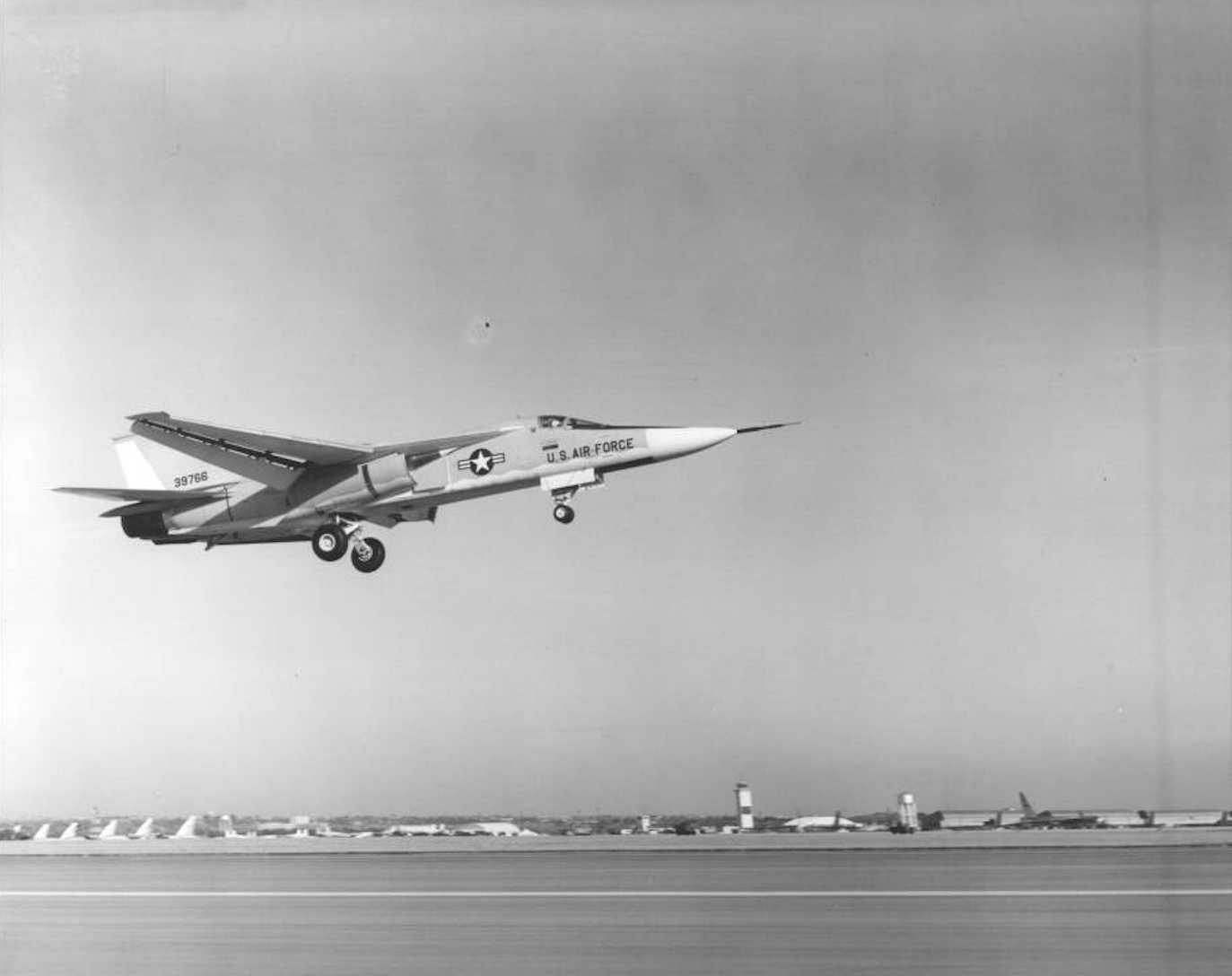

The F-111A climbed to 10,000 feet (3,048 meters) and the pilots cycled landing gear. Johnson later said, “I have flown several other planes [Convair YF-102 and F-106A] on their first flight and none of the others were able to retract the landing gear the first time out.”
The wings remained at the 26° sweep setting throughout the flight, representing an “average” wing setting.
Because of several compressor stalls and a flap malfunction, the flight was limited to 21 minutes instead of the scheduled 40. Landing speed was only 130 miles per hour (209 kilometers per hour), approximately 50 miles per hour (80 kilometers per hour) slower than current fighters. The faulty flap was caused by a “kinked” spring an an electrical brake switch. Project Chief J. T. Cosby explained that, “The brake keeps the flap from moving after they are positioned. The brake locked when the flaps were lowered to the 35° position for takeoff and stayed locked.” Because of this, the F-111A’s speed limited to 215 miles per hour (346 kilometers per hour) on this flight. After landing, the problem was diagnosed and repaired within two hours.
Following the flight, Dick Johnson was quoted as saying that he was “a little bit more than pleasantly surprised at the takeoff and landing performance. The plane handled extremely well on both takeoff and landing. I felt I had power to spare.”
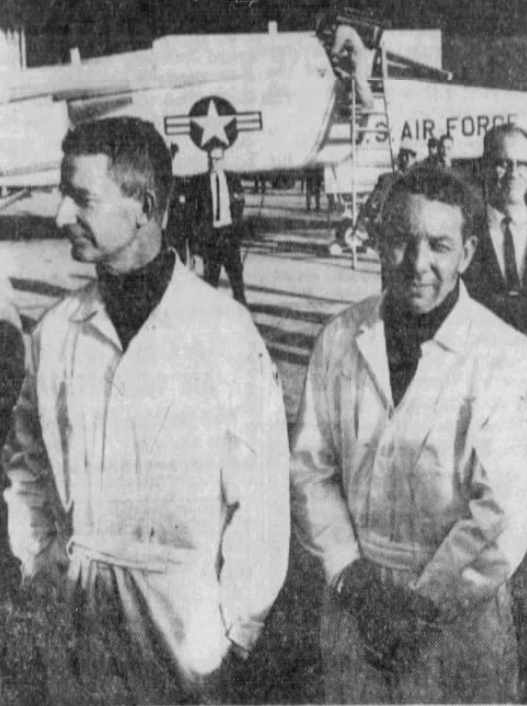
On the F-111A’s second test flight, 6 January 1965, wings swept from 16° to 72.5°.
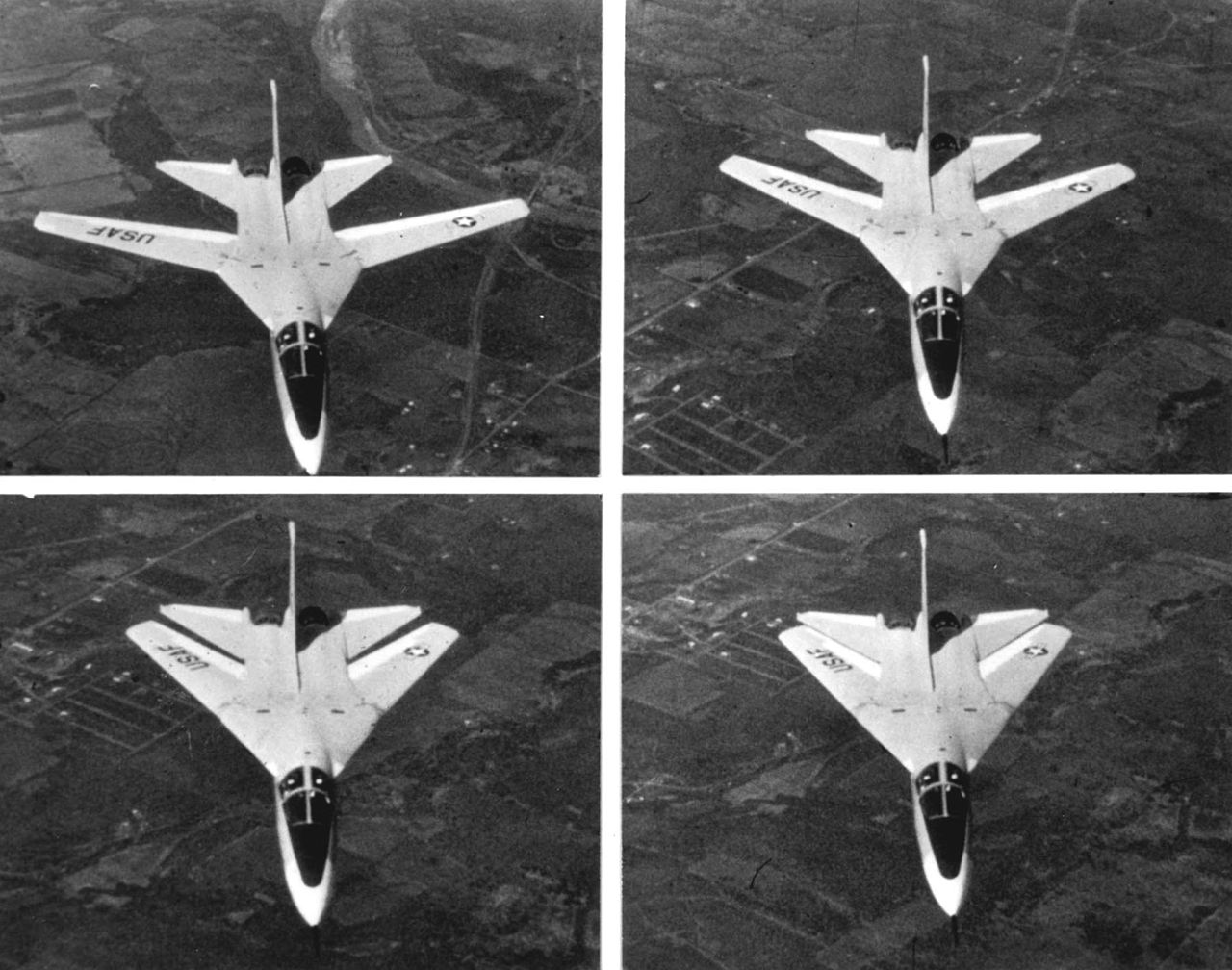
63-9766 had been rolled out of the General Dynamics assembly plant on 15 October 1964.
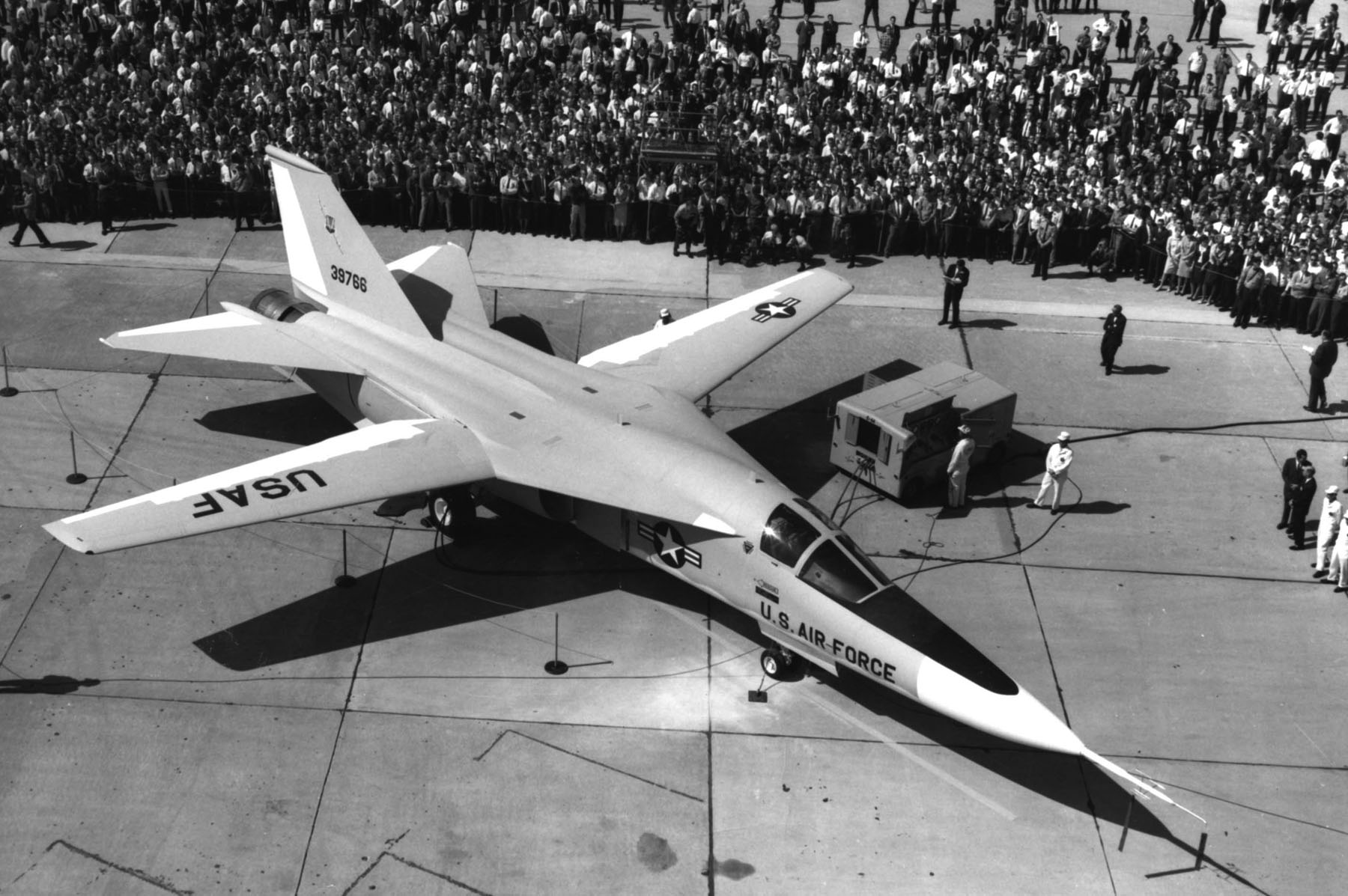
The General Dynamics F-111A is a large twin-engine strike fighter with variable-sweep wings produced for the U.S. Air Force. A second variant, the F-111B, made its first flight 18 May 1965. It was intended for the U.S. Navy as an interceptor, but proved to be too heavy to operate from aircraft carriers and was not put into production.
The F-111 was a result of Secretary of Defense Robert S. McNamara’s controversial “TFX” program which would use a single aircraft for both the Air Force and Navy as a fighter, interceptor, tactical fighter bomber, and strategic nuclear-armed bomber. Trying to make a single aircraft perform these different missions resulted in very high cost overruns, and the aircraft gained a negative perception in the news media. The F-111A and its follow-on, the FB-111 “Aardvark,” however, proved to be very effective in precision strike missions.
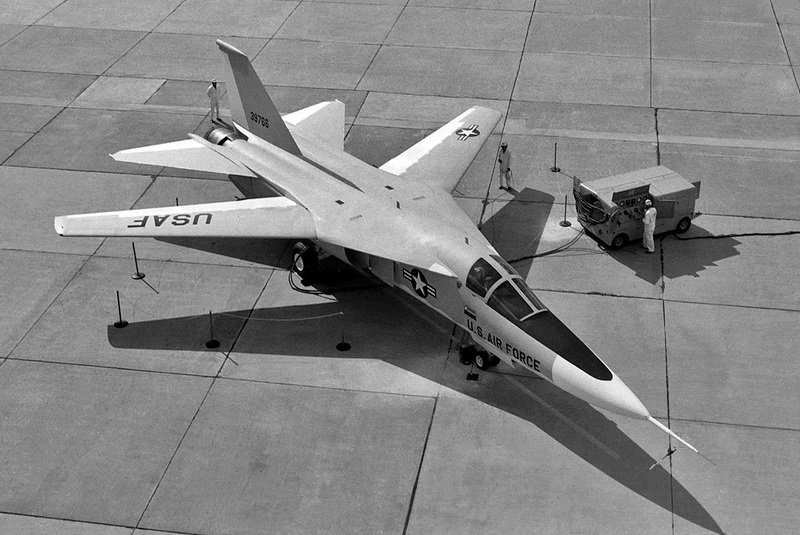
The F-111A was flown by two pilots seated side-by-side in the cockpit. Pre-production aircraft were equipped with ejection seats, but production aircraft had a crew escape module which protected the pilots from the effects of supersonic speed.
The airplane incorporated a state-of-the art terrain-following radar and and inertial guidance computer system that allowed it to fly at a constant height above the ground. The radar searched ahead and to the sides of the aircraft’s flight path and the computer calculated pitch angles to clear obstacles ahead. The system could be programmed to fly the aircraft as low as 200 feet (61 meters) above the ground. These “nap of the earth” profiles allowed the F-111A to avoid detection by radar.
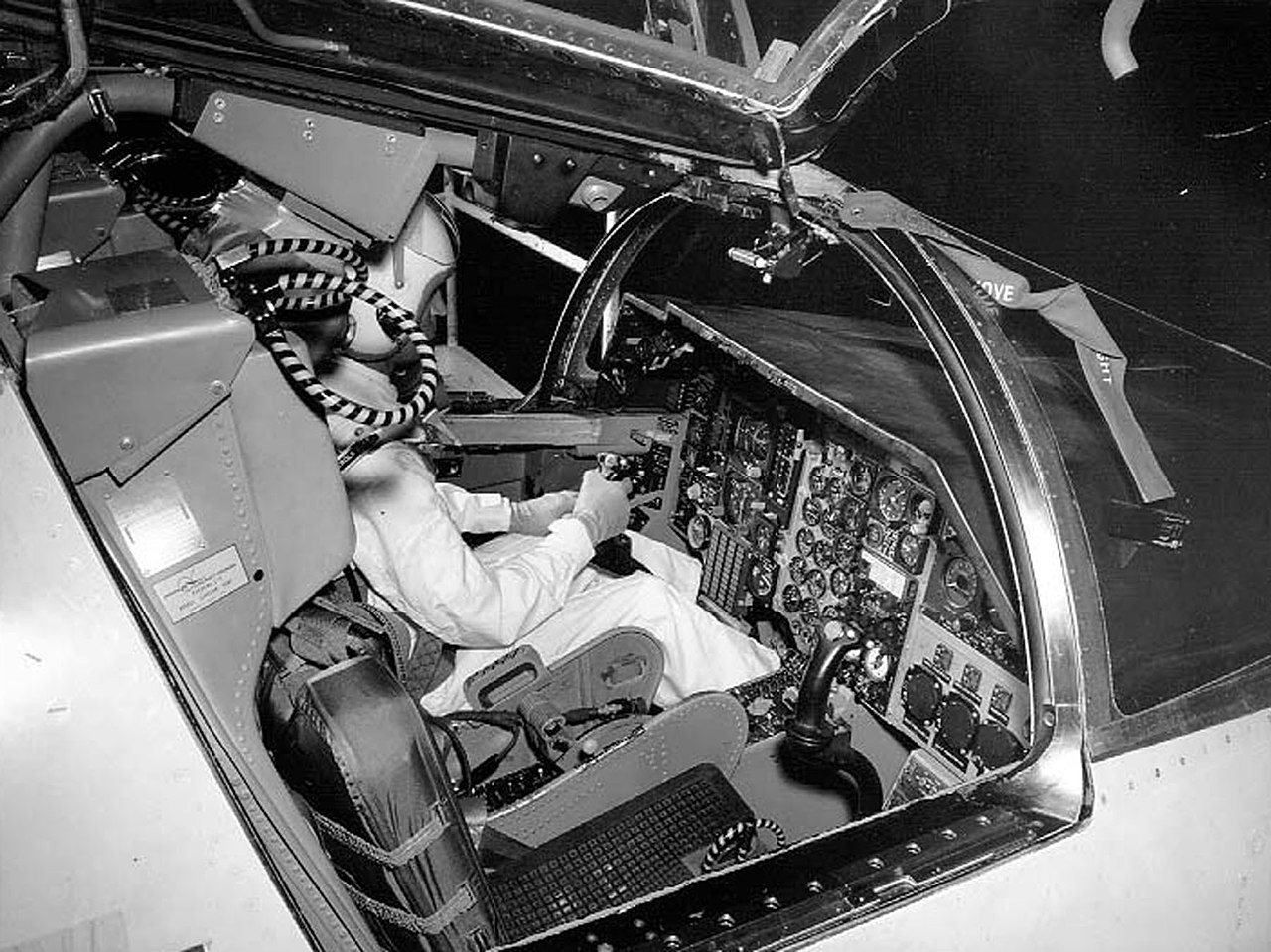
The F-111A is 73 feet, 10.6 inches (22.520 meters) long. With the wings fully extended, their span is 63 feet, 0.0 inches (19.202 meters), and fully swept, 31 feet, 11.4 inches (9.738 meters). The airplane has an overall height of 17 feet 1.4 inches (5.217meters). The wings are capable of being swept from 16° to 72.5°. Roll control is transferred to the stabilators when the wings sweep to 42°. It has an empty weight of 46,172 pounds (20,943 kilograms) and maximum takeoff weight of 92,657 pounds (42,029 kilograms).
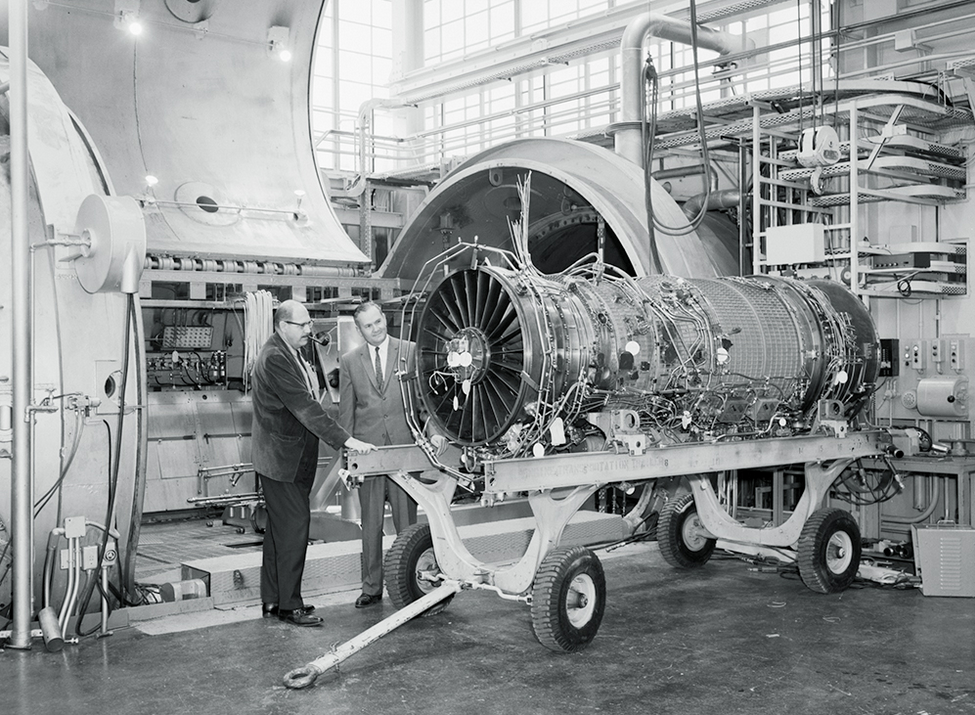

The F-111A had a maximum speed of Mach 1.2 at Sea Level, (913 miles per hour/1,225 kilometers per hour), and Mach 2.2 (1,452 miles per hour/2,336 kilometers per hour) at 60,000 feet (18,288 meters). With 5,015.5 gallons (18,985.7 liters) of internal fuel, its range was 3,165 miles (5,094 kilometers). The aircraft could carry external fuel tanks and was capable of inflight refueling.
The F-111A was designed to carry either conventional or nuclear weapons. It has an internal bomb bay, one hardpoint under the fuselage, and four hardpoints under each wing. With the wings swept to 72.5°, it could carry 18 M117 bombs, but when extended to 26°, it could carry as many as 50. On a nuclear strike mission it could carry the B61 thermonuclear bomb. A General Electric M61A1 Vulcan 20 mm rotary cannon could be installed in the bomb bay, with 2,000 rounds of ammunition..
159 F-111As were built, including 18 pre-production aircraft.
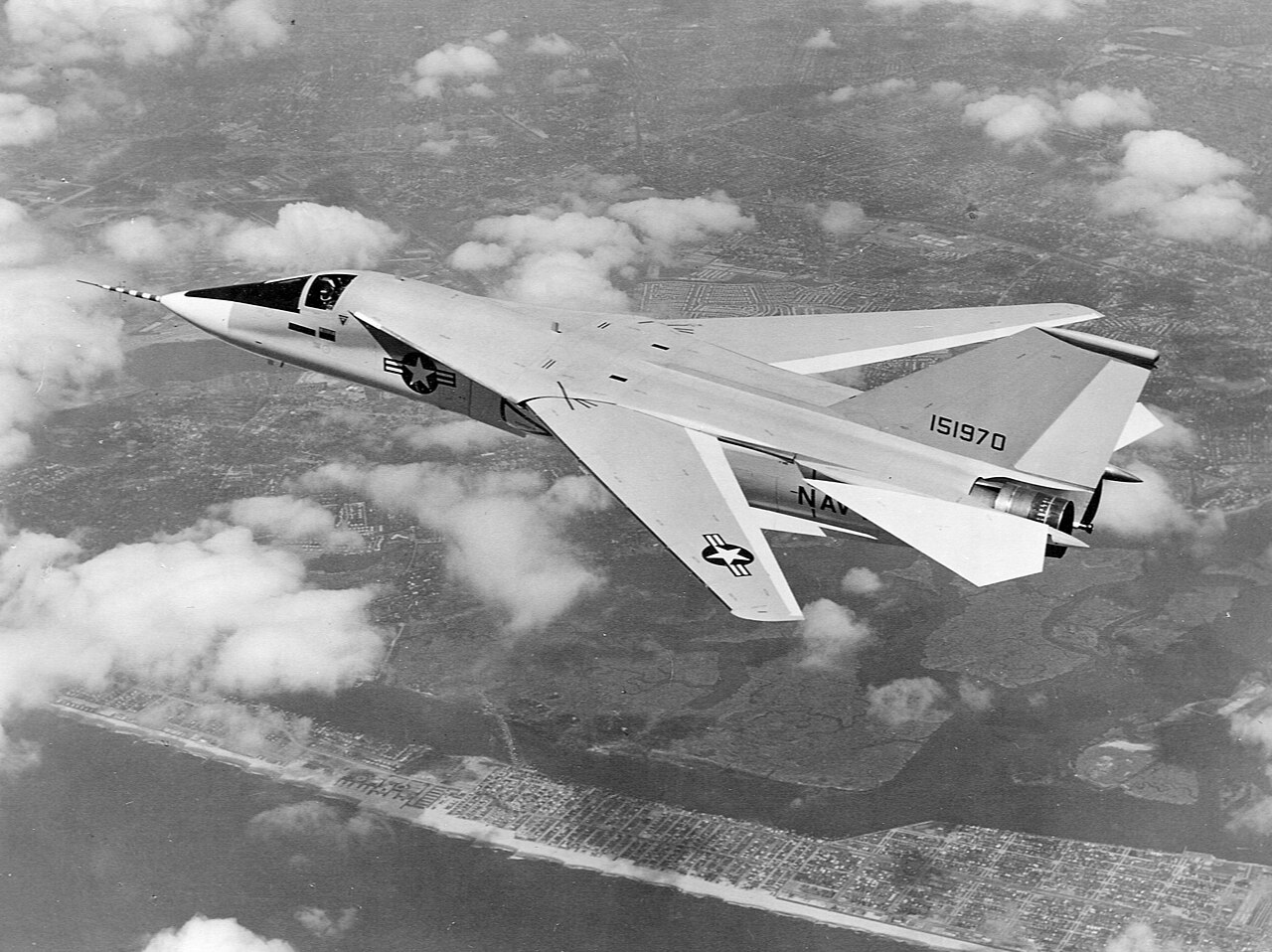
The prototype General Dynamics F-111A is displayed at the Air Force Flight Test Center Museum at Edwards Air Force Base, California.
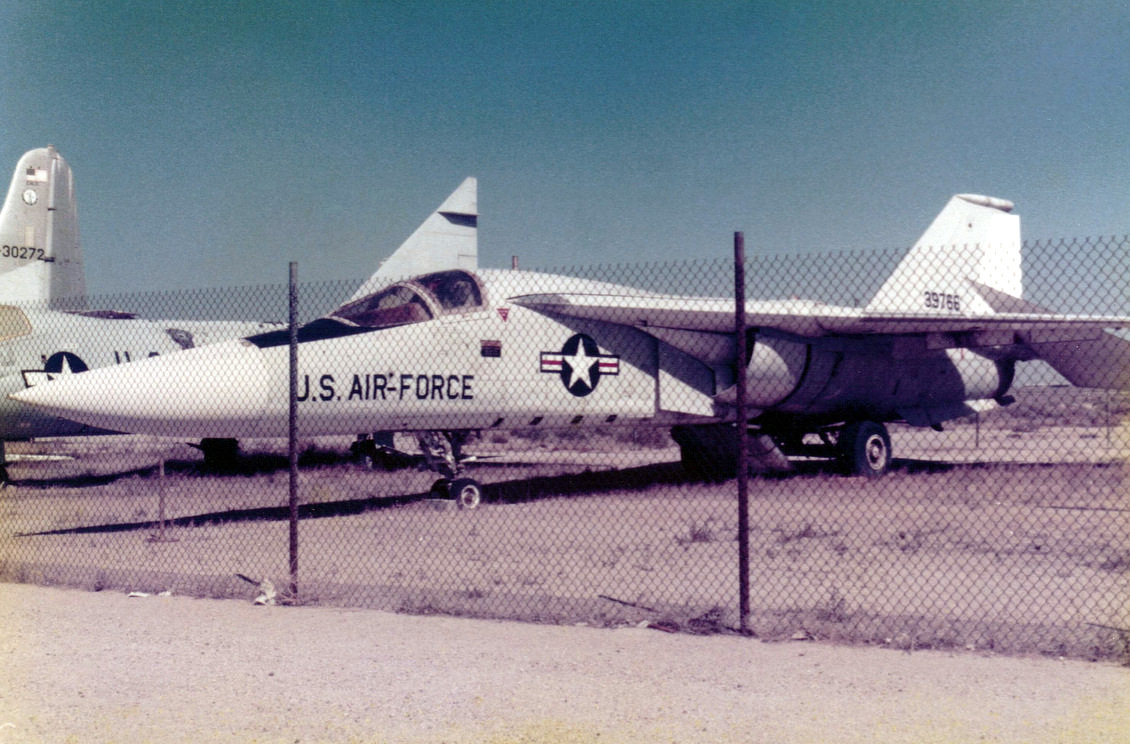
A further development of the F-111A, the FB-111A, made its first flight at Carswell on 13 July 1968. It used the larger wing of the F-111B, with stronger landing gear, an enlarged bomb bay and more powerful engines. The FB-111 is known as the “Aardvark.”
© 2023 Bryan R. Swopes
